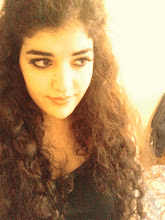
There are many types of lace, classified by how they are made. These include:
Needle lace; such as Kenmare Lace are made using a needle and thread. This is the most flexible of the lace-making arts. While some types can be made more quickly than the finest of bobbin laces, others are very time-consuming. Some purists regard needle lace as the height of lace-making. The finest antique needle laces were [made] from a very fine thread that is not manufactured today.
Cutwork, or whitework; lace constructed by removing threads from a woven background, and the remaining threads wrapped or filled with embroidery.
Bobbin Lace; as the name suggests, made with bobbins and a pillow. The bobbins, turned from wood, bone or plastic, hold threads which are woven together and held in place with pins stuck in the pattern on the pillow. The pillow contains straw, preferably oat straw or other materials such as sawdust, insulation styrofoam or ethafoam. Also known as Bone-lace. Chantilly lace is a type of bobbin lace.
Tape lace; makes the tape in the lace as it is worked, or uses a machine- or hand-made textile strip formed into a design, then joined and embellished with needle or
bobbin lace; as the name suggests, made with bobbins and a pillow. The bobbins, turned from wood, bone or plastic, hold threads which are woven together and held in place with pins stuck in the pattern on the pillow. The pillow contains straw, preferably oat straw or other materials such as sawdust, insulation styrofoam or ethafoam. Also known as Bone-lace. Chantilly lace is a type of bobbin lace.
Knotted lace; including macramé and tatting. Tatted lace is made with a shuttle or a tatting needle.
Crocheted lace; including Irish crochet, pineapple crochet, and filet crochet.
Knitted lace; including Shetland lace, such as the "wedding ring shawl", a lace shawl so fine that it can be pulled through a wedding ring.
Machine-made; any style of lace created or replicated using mechanical means.
Guipure; The stitching area is stitched with embroidery threads that form a continuous motif. Afterwards, the stitching areas are removed and only the embroidery remains. The stitching ground is made of water-soluble or non heat-resistant material.

No comments:
Post a Comment